TraveLIB
Borderline Balkans
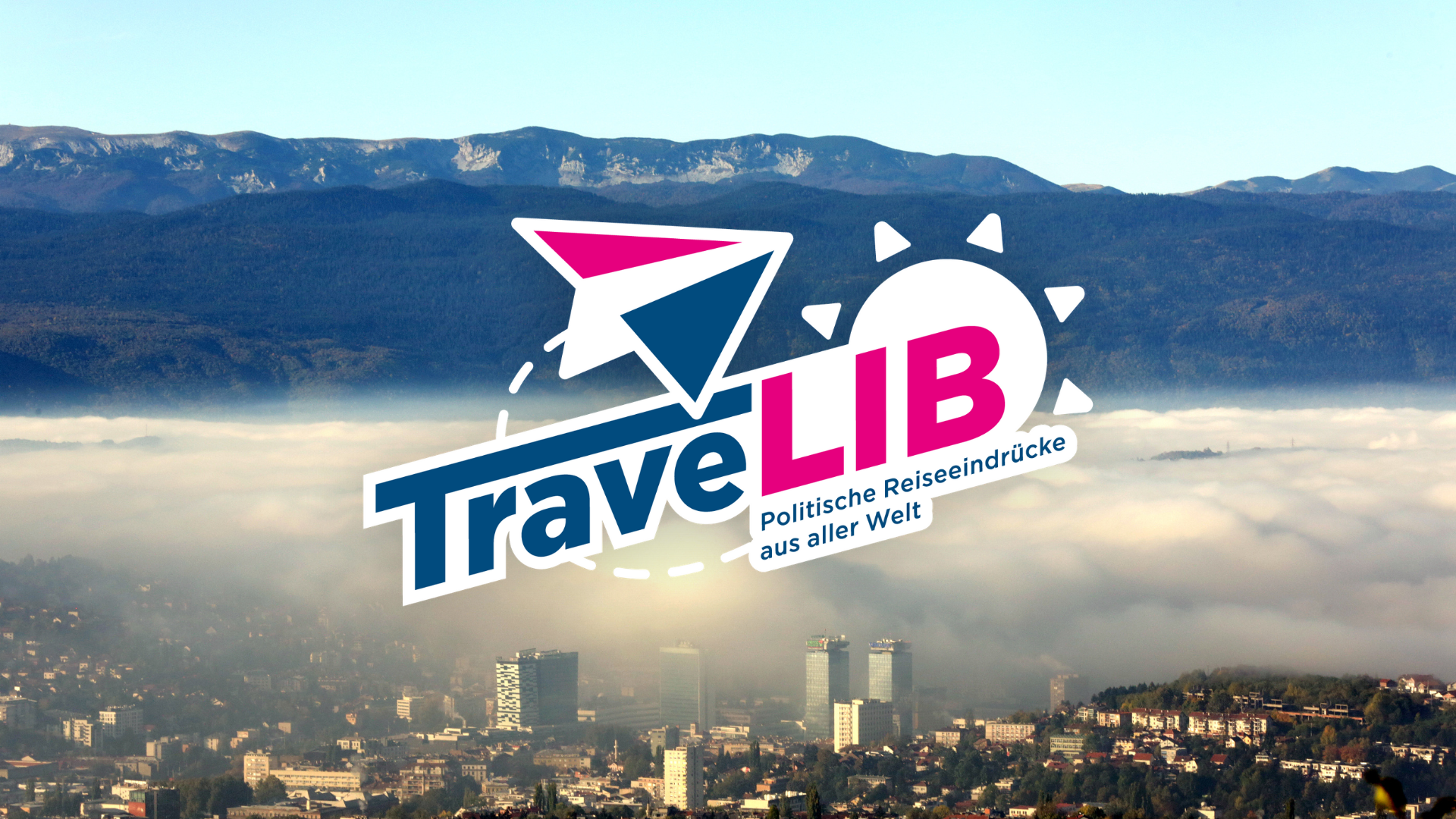
In an area smaller than former West Germany, as many as six countries – Albania, Bosnia and Herzegovina, Kosovo, Montenegro, Northern Macedonia and Serbia – are bundled together: the Western Balkans is the colourful mosaic in the courtyard of the European Union. Travellers are bound to experience for themselves how much still needs to be done to integrate the region in a united Europe.
For people who want to see border posts go up within Europe again, the Western Balkans are paradise. The region bristles with borders, including EU external borders (and here both Schengen and “regular” EU external borders), lengthy border and customs controls, and other oddities.
There are disputed river borders (between Serbia and Croatia), mountain borders (between Montenegro and Kosovo), and even maritime borders (between Croatia and Bosnia and Herzegovina). There are borders with members of the same nationality living on both sides (on both banks of the Serbian-Bosnian border river Drina live ethnic Serbs), and borders that at least one side does not consider to be a border at all: due to the non-recognition of Kosovo, Serbia officially calls its border crossings with Kosovo “Police Checkpoints within the Territory of the Republic of Serbia vis-à-vis the Provisional Institutions of Self-Government in Priština”. It’s the Balkans in a nutshell.
Anyone leaving the EU at either the Croatian or Hungarian-Serbian border and re-entering the EU at the Serbian-Bulgarian border can easily wait five to ten hours at the crossings in summer. Those unlucky enough to be truck drivers can usually write off several days.
While EU citizens hardly ever have to slow down at national borders when traveling even to the remotest corners of the Union, people in the Western Balkans spend a significant amount of time at border crossings. Forty entry and exit stamps were accumulated by the author of this article within a year posted in the Western Balkans, with an estimated twenty minutes of waiting time per stamp.
However, there is always worse: The 1.8 million inhabitants of Kosovo currently still need a visa to enter the EU, which can only be obtained with great personal and financial effort; for people, mind you, who live in the midst of Europe! At the end of the year, this practice will finally come to an end.
Worth seeing
The capitals of the region are all worth seeing and getting a sense of, precisely because they are so different. While Zagreb, in old Austro-Hungarian tradition, is elegant and even a little posh, Belgrade with its two million inhabitants is a lively, exuberant city. The mishmash of cultures and religions is still most palpable in Sarajevo, even though life has developed from “living side by side” to “living apart” after the Bosnian war. The Kosovar capital of Pristina, which in Yugoslav times was a provincial town, is now a bustling city with construction sites at every corner.
Anyone traveling between Belgrade and Sarajevo should certainly plan a visit to the Srebrenica genocide memorial. This former UN safe area gives visitors a lasting impression of what hatred of minorities, violent border shifts and the pursuit of supposedly “pure” nation-states can lead to. In July 1995, Bosnian-Serbian units murdered 8,000 Muslim citizens here within five days.
Those who thought that the Western Balkans were either Austro-Hungarian or Ottoman are mistaken. Remnants of the Illyrians, the Romans, the Goths, Slovaks or Danube Swabians are evident in many places. In the Serbian autonomous province of Vojvodina, quadrilingual town signs are not uncommon. A small museum about German traces of the Danube Swabians can be found in Sremski Karlovci.
Getting around
Due to a lack of alternatives, the car remains the number one means of transportation in the Balkans. Railroad lines are few; Belgrade is the largest city in Europe without a subway. There is no way around motor transport. This is why the region’s major cities are oftentimes congested and full of smog, especially in winter.
It is not only the manifold border experiences that make traveling in the Balkans an adventure, the roads themselves also contribute to it. A highway network is non-existent, except in Serbia. This leaves even more time to enjoy the often grandiose scenery, even though caution in road traffic is always advisable. The gorges of the Dinaric Mountains in Bosnia and Montenegro or the peaks of Stara Planina, covered with snow well into spring, in Southern Serbia compensate for the recklessness of many a local road user.
If you want to experience the Balkans in a completely different way, you can take a train from Belgrade to the Montenegrin Adriatic coast in Bar once a day from mid-July to September. Eleven hours for about 300 miles according to the timetable, often longer, on one of the most beautiful railroad lines in Europe through the Dinaric Alps – of course with a border control included!
Markus Kaiser is project director for the Western Balkans for the Friedrich Naumann Foundation for Freedom, based in Belgrade.
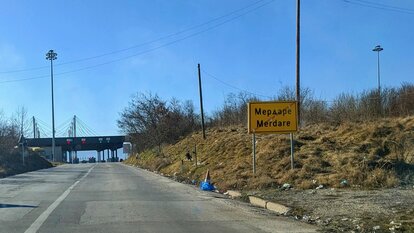
Serbisch-kosovarischer Grenzübergang bei Merdare
© Markus Kaiser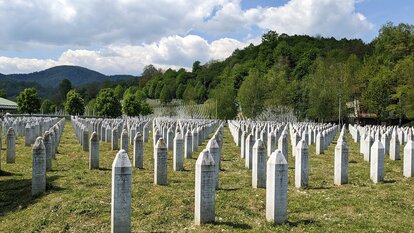
Völkermord-Gedenkstätte in Srebrenica-Potočari
© Markus Kaiser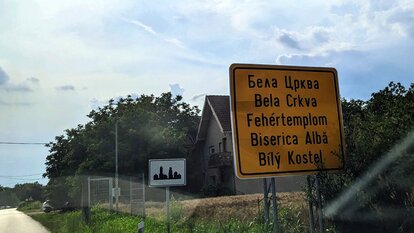
Ortsschild von Bela Crkva (dt. „Weißkirchen“) mit dem Stadtnamen zweimal auf Serbisch sowie auf Ungarisch, Rumänisch und Tschechisch.
© Markus Kaiser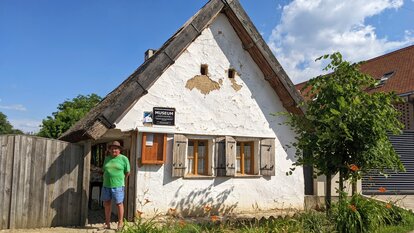
Donauschwäbisches Museum in Sremski Karlovci mit Kurator Stjepan Seder (serbisch) bzw. Stefan Söder (deutsch).
© Markus Kaiser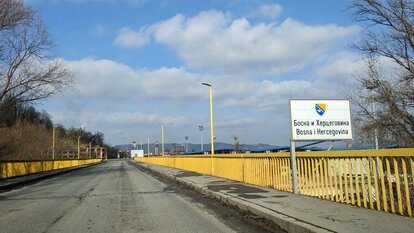
Grenzübergang über die Drina zwischen Zvornik in der Republika Srpska (Bosnien und Herzegowina) und Mali Zvornik in Serbien
© Markus Kaiser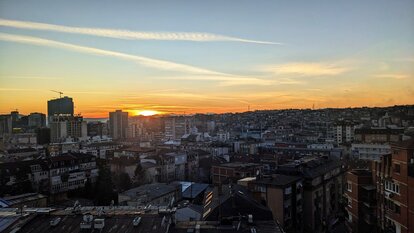
Sonnenuntergang in Prishtina, Kosovo.
© Markus Kaiser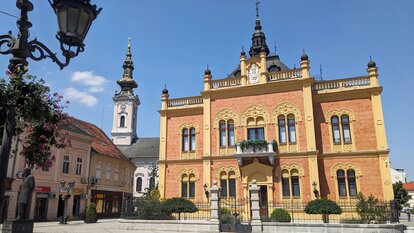
Glanz der K&K-Monarchie in Novi Sad, Hauptstadt der autonomen Provinz Vojvodina.
© Markus Kaiser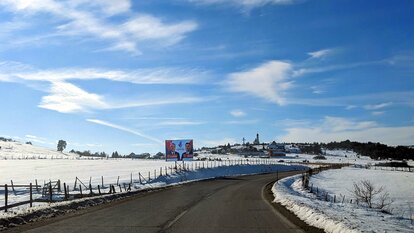
Die winterliche Romanija in der Republika Srpska (Bosnien und Herzegowina.
© Markus Kaiser